History
First mentioned as possible impact crater more than 70 years ago, the 200m wide crater structure of the “Domaine du Meteore”-vineyard was almost ignored by scientists for more than half a century. Based on its shape and a strong magnetic anomaly, Gezè and Cailleux were the first to suggest an impact origin of the crater. Only one year later the Swedish astronomer Janssen published a short paper in an international journal and supported the idea as he saw similarities to craters on the Moon’s surface. Back in 1964 one of the leading impact crater specialist Carlyle S. Beals, who also initiated the world impact crater database, rejected the idea based on two simple observations. First, the crater doesn´t show any elevated rim; second, no evidence of a magnetic anomaly was found. This rejection led scientists to almost ignore the crater. No mineralogical nor geophysical work on the crater was ever performed until 2022 when a team of experts from Goethe University Frankfurt (Germany) started detailed field work on the crater structure after some promising preliminary findings the year before.
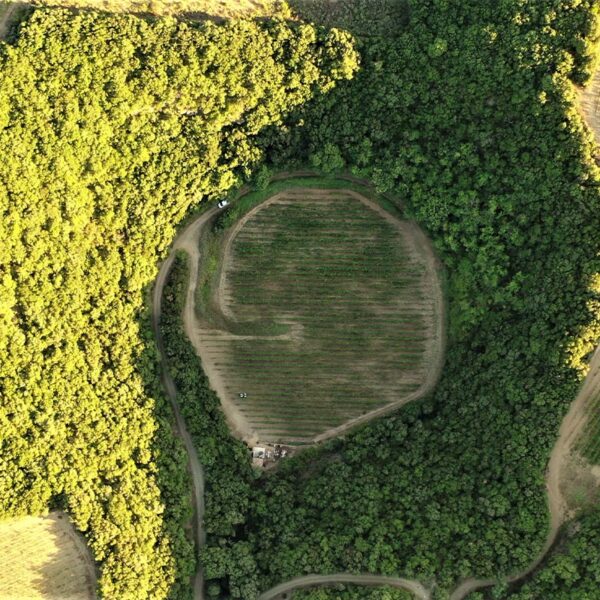
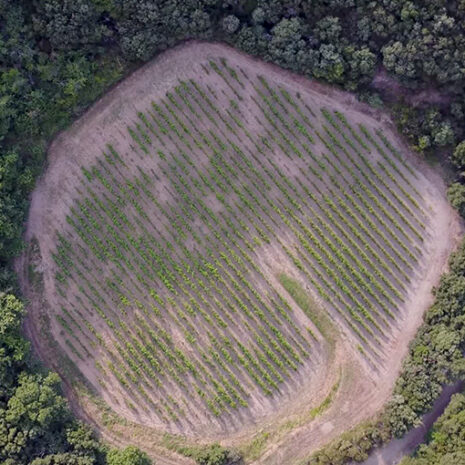
Story behind its detection
It was just by chance that the German geoscientist and cosmochemist Prof. Frank Brenker stepped over a bottle of “Domaine du Meteore” wine during his vacations in Marseillan-Plage. He came to the domaine to taste the wines and of course to visit the crater. He and his wife Andrea took several samples arbitrarily chosen from the crater floor for later laboratory studies. Already the initial inspection of these samples show evidence for a possible impact origin. Thus, one year later he returned with his colleague Andreas Junge, who is specialized on geophysical studies of the ground, and a group of students in order to find other pieces of evidence confirming or rejecting the hypothesis of an impact origin. During this field campaign in April 2022 more and more evidence for an impact process was found.
The final compelling evidence came from laboratory analyses Prof Brenker performed back in Frankfurt.
Scientific evidence for its meteor impact origin
Over more than half a century the origin of the crater at the domaine remains a mystery. Ideas range from sinkholes formed by the dissolution of large sulfate, halite or carbonate blocks in the ground to volcanic activity and finally the impact of an iron meteor. The quite homogeneous metamorphic schist-sandstone unit located at the domaine already disprove the sinkhole hypothesis as no evidence for the existence of any huge sulfate or carbonate blocks were ever found. A volcanic origin is also unlikely as not a single rock of magmatic origin was ever discovered.
However, a meteor impact of this size will cause several shock features within the rocks of the target region and will also transform the impactor material itself. A comprehensive mineralogical and geophysical study within and around the crater might give scientific evidence that the crater is indeed formed by a meteor impact.
Magnetic anomaly
The strength of Earth's magnetic field at any given point is formed from three different components. The main field is formed within the Earth´s core and is quite constant over long periods of hundreds of years. The second component is formed in the Earth´s atmosphere from the interaction with solar wind and therefore is highly variable even within a single day. Thus, any measurement of the current field strength has to be corrected against this variation. The third component is formed by magnetic and paramagnetic minerals, like iron-oxides. This component is constant but highly variable depending on the rocks occurring in the respective ground at the measurement point.
Whereas a sinkhole is unlikely to change the strength of the magnetic field, an impact can significantly change this third component, e.g. by fracturing or amorphization of minerals. About 90% of all conformed impact crates share this feature. Many small impact structures (<300m diameter) typically show a magnetic low relative to the surrounding area.
The detailed survey of the magnetic field strength in and around the “Domaine du Meteore”-crater performed in April 2022 show a pronounced magnetic low. Several magnetic profiles measured from the crater rim towards its center and corrected for daytime changes, show a decrease of several hundred nT towards the crater floor (Figure 1). This feature alone will exclude a sinkhole origin and favor an impact origin.
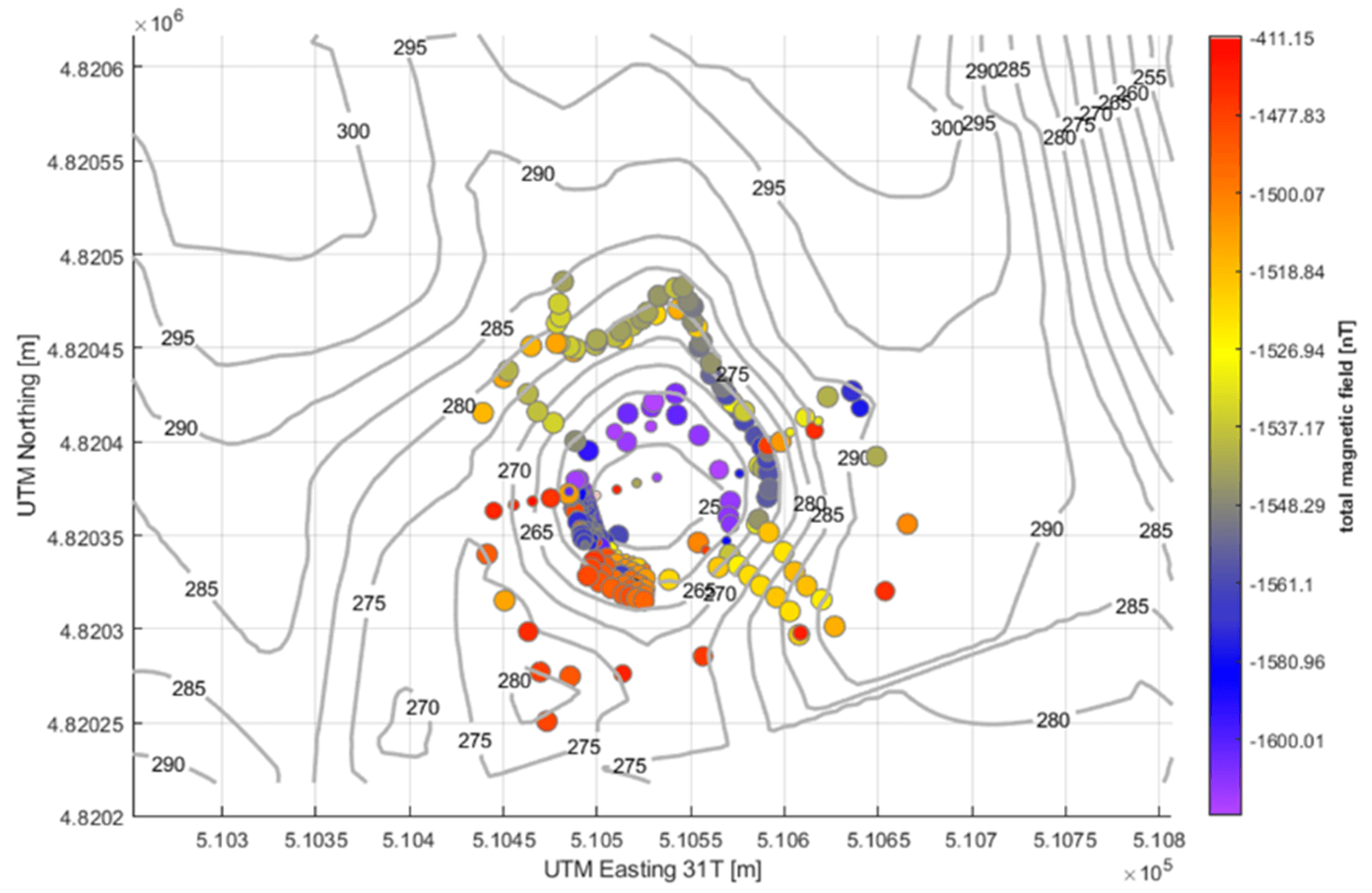
Fig. 1: Magnetic field strength measured in and around the “Domaine du Meteore”-crater, corrected against daily variations. A clear reduction towards the crater floor is obvious. The size of the symbols reflects the reliability of each measurement. Smaller symbols reflect a lower reliability.
Impact spherules
Tiny micro-spherules can be formed by a variety of processes. Some are anthropogenic, others are micrometeorites. During a meteor impact, spherules are formed by ablation of the impactor reacting with the atmosphere producing Ni-rich Fe-oxides ((Fe,Ni)O), others are formed during the impact process itself by interaction between the molten or evaporated target material, the impactor and the higher density atmosphere in lower atmospheric levels. The latter typically comprises of magnetite (Fe3O4) or haematite (Fe2O3) containing minor elements such as Silicon, Aluminum and others from the target rock.

Fig. 3: High structural variety of iron-oxide spherules found in the soils of the “Domaine du Meteore”.
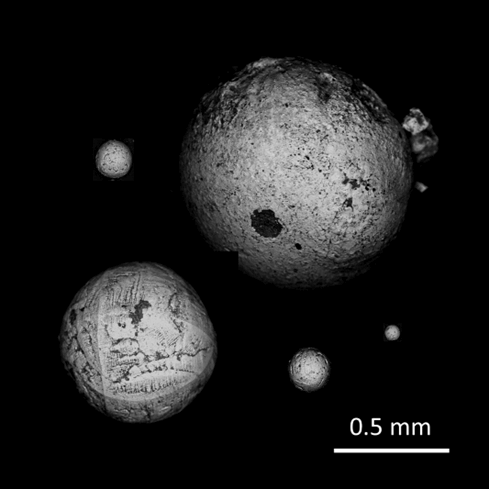
Fig. 2: Impact spherules
In the crater and in the soils of the surrounding vineyard hundreds of magnetic micro-spherules were detected (Figures 2 and 3). They range in size from a few tens of micrometer up to more than a mm. The outer shell of this spherules is usually formed by an iron-oxide layer with rare fragments of Ni-rich iron-metal (Figure 4). Often they contain an inner core of highly fragmented target minerals together with diamonds (Figure 5) formed by the impact shock on carbon material like graphite and/or organics from the soil.

Fig. 4: Impact spherules compromising of Fe-oxide and rare Ni-rich iron-metal.

Fig. 5: Distribution of shock diamond, quartz and mica based on structural measurement applying Raman-spectroscopy.
Shock effects in target rocks
Finally, a compelling proof of the impact origin comes from shock effects in quartz grains of the target rocks. An impact breccia (Figure 6) collected at the floor of the crater show several shock features. The most important are planar faults and planar deformation features (Figure 7A,B) in quartz, which are widely accepted as shock indicator, formed by shock pressures of more than 5 or 10 GPa (100.000 bar), respectively, a pressure which cannot be reached by any known plate tectonic or mounting building process. For the unexperienced eyes they look quite similar, but PDFs are much finer and final proof can only be obtained by high resolution transmission electron microscopic studies (TEM).
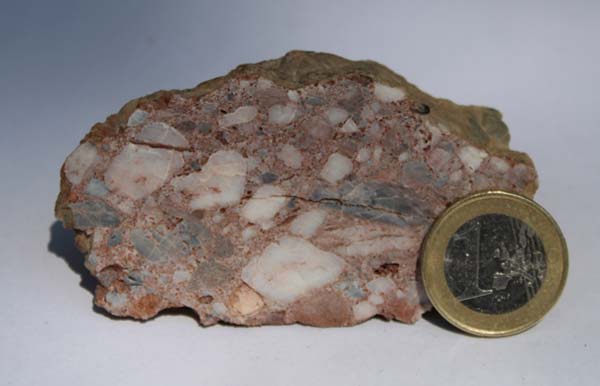
Fig. 6: Impact breccia found within the crater
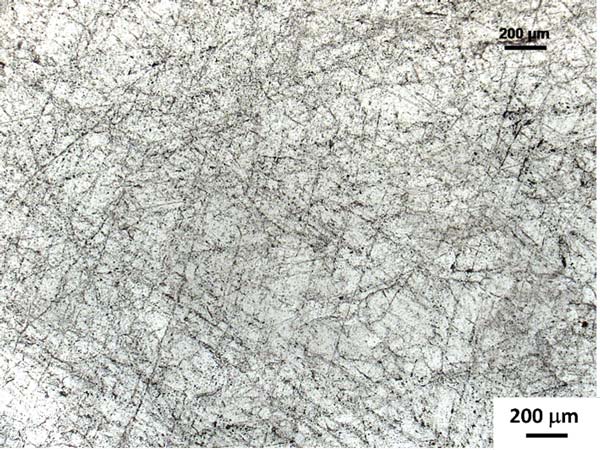
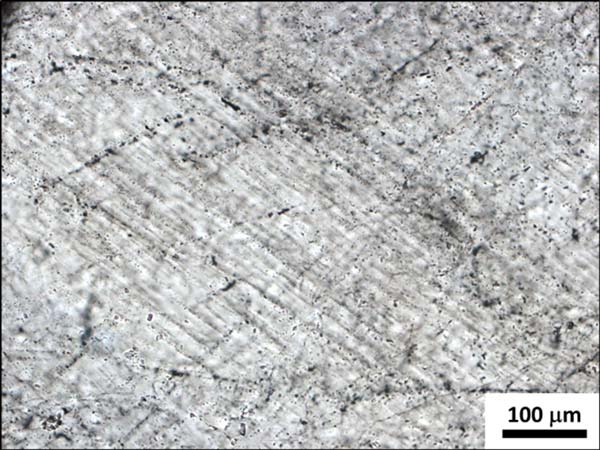
Fig. 7A. (left) Planar faults (PFs) and B (right) planar deformation features (PDFs) in quartz
Final comment
In summary, the redaction of the magnetic field, the occurrence of impact spherules together with shock features in target rocks are compelling evidence that the crate on the "Domaine du Meteore” is indeed formed by impact of an extra-terrestrial object most likely within the last 10.000 years.
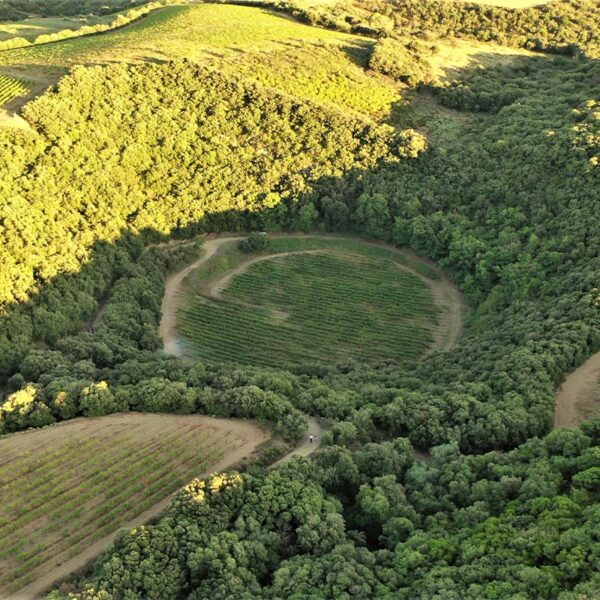
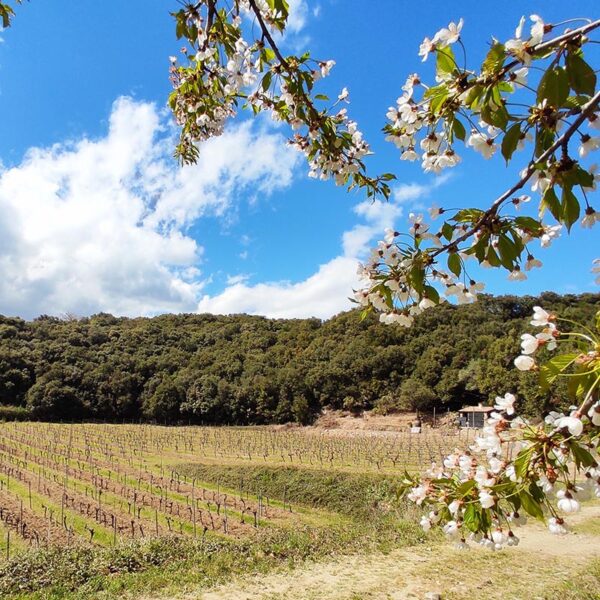

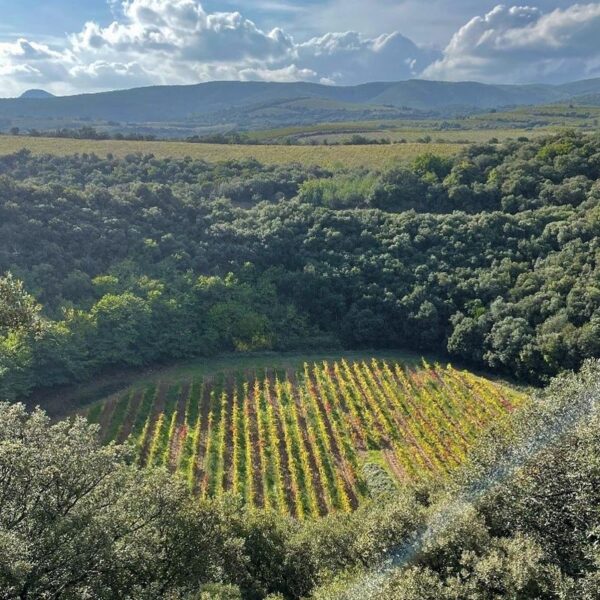
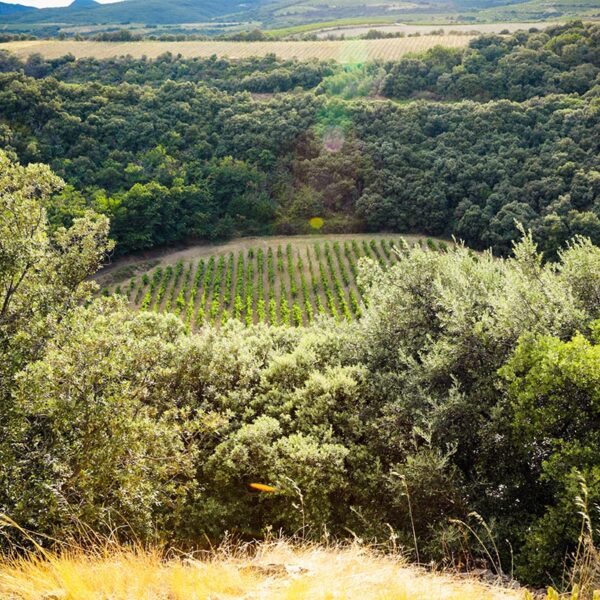

Visit Us
The vineyard is quietly nestled in the Haut-Languedoc national park and we are delighted to welcome visitors for tastings, walks and more. With sweeping views down to the Mediterranean and, at our heart, the huge meteorite crater after which we are named, it is a truly one-of-a-kind place to visit.
Find out more about visiting the domaine, tastings, exploring the area and more.
Our Wine
Our founding ethos is to create wines that give a sense of place – wines that express the terroir and forces of nature that created them, with as little intervention and process as possible.



